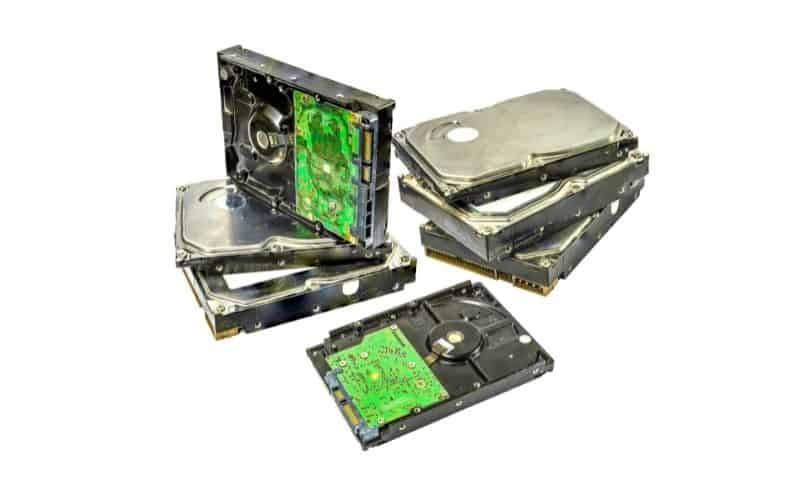How To Safely Destroy A Hard Drive

Table of Contents
When you are throwing away a computer, one thing you should really consider is what is contained on your hard drive. You want to ensure you’ve backed up all data. But you’ll also want to safely destroy the hard drive so the data is irretrievable.
Without doing so, If someone wanted to, they could take the hard drive and attempt to retrieve whatever information they wanted.
It certainly isn't unheard of for hackers to go to the junkyard and see what they can claim from people's hard drives which haven't been disposed of properly.
So here's a guide on how to dispose of a hard drive, without compromising any of your personal data.
Safety note
Make sure you have protective gloves, and protective eyewear ready. And also find a place where you can safely destroy your drive, where you will be able to gather all materials. You don’t want to leave parts laying around.
Finally, take the appropriate amount of care to safely dispose of your hard drive.
Safely destroy a hard drive (and your data)
Remove The Hard Drive From Your Computer
First things first, you need to extract the hard drive from your actual computer. This requires a precision screwdriver, you can buy one here – this will make the whole process easier.
Many computers come in different shapes and sizes depending on the age and brand and make, so there isn't one exact way we can direct you to do the hard drive.
Look up your specific model, if you are throwing it away it doesn’t matter how much you destroy the computer in reality.
The hard drive is often rectangular in shape and has what looks like a thick, small, CD rom in it with an arm and needle which reads it.
Step
Access The Platter And Circuit Board
Unfortunately, simply removing your hard drive from your computer won't destroy it enough, someone can still retrieve data from it. We need to access and destroy the platter and circuit board next.
This platter is what the weird metal CD looking component is, the circuit board looks like any classic motherboard.
Using the appropriate screwdriver you need to reveal the platter and the circuit board by removing the casing around the hard drive.
Once again, if you are destroying it this doesn’t need to be pretty. You just need access to the platter and circuit board so you can destroy them properly.
Once you have revealed them both you can move to the next step.
Step
Scratch It Up
The arm that looms over the platter like a vinyl player, that needs to be removed next.
What you do next is up to you, but the main goal here is to completely scratch up the platter.
Get a key or knife or just your screwdriver, some use sandpaper to be really safe they are destroying everything.
But get crazy and scratch that platter up, this is where the data is stored, just like a vinyl, so you need to make it unreadable by comprehensively scratching it.
Step
Destroy The Circuit board
Next, we need to find the circuit board you locate and similarly destroy it beyond repair.
Extra information is stored here, so even if the platter is done the circuit board also needs attention to be safe.
We need to snap the circuit board in half and make it beyond repair – easy, right.
SAFETY NOTE: Be careful breaking it in the direction of your eyes these circuit boards are often shatter prone. Break away from your face, and wear eye protection.
Final Thoughts
Once your circuit board is destroyed and platter scratched to high heaven, your data is safe.
We recommend recycling as much of any wider computer as you can, this also ensures it isn't going to the dump.
Without following these steps your personal data stored on the hard drive is up for grabs in the junkyard – destroy both the platter and the circuit board for success.
